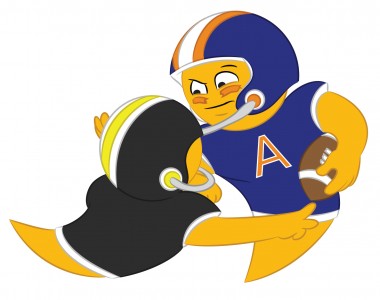4 Tips from a College Linebacker Prospect
 When I started playing football, I knew that I wanted to be a leader. I wanted my teammates to respect and to listen to me, and I wanted my coaches to lean on me but I knew I was never going to be a quarterback. I knew I loved to be physical, to hit and to run, but I also knew I didn’t have the greatest set of hands. Taking these wants and attributes into consideration, I found that playing linebacker had been my calling. Growing up a Miami Dolphins fan, my idols were Zach Thomas and Bryan Cox, and I wanted to be just like them. Maybe you find that your idols are Ray Lewis, Clay Matthews, or Von Miller. Maybe you find that you share many of the same passions as I did, and that’s why you play linebacker as well. Any way you look at it, it’s likely your first goal beyond a successful high school career is to get recruited to play college football. Here are some tips to help you become a better linebacker and college football prospect.
When I started playing football, I knew that I wanted to be a leader. I wanted my teammates to respect and to listen to me, and I wanted my coaches to lean on me but I knew I was never going to be a quarterback. I knew I loved to be physical, to hit and to run, but I also knew I didn’t have the greatest set of hands. Taking these wants and attributes into consideration, I found that playing linebacker had been my calling. Growing up a Miami Dolphins fan, my idols were Zach Thomas and Bryan Cox, and I wanted to be just like them. Maybe you find that your idols are Ray Lewis, Clay Matthews, or Von Miller. Maybe you find that you share many of the same passions as I did, and that’s why you play linebacker as well. Any way you look at it, it’s likely your first goal beyond a successful high school career is to get recruited to play college football. Here are some tips to help you become a better linebacker and college football prospect.
Spend Time in the Film Room
Linebackers become great because they’re able to anticipate and recognize plays before they happen. This skill is a mix of football intelligence and many hours spent studying an opponent’s tendencies. Learn how to watch film for situations where teams become predictable. On third downs, what’s their go-to play? On fourth and short, does the offense sneak it up the middle or try to bounce the ball outside? What happens during goal line situations or ordinary first and second downs? Do certain players give the play away pre-snap? Working closely with your position coach and defensive coordinator will give you a better understanding of specific areas to focus on.
Build a Strong Relationship with the Weight Room
Linebackers have to have bodies capable of punishing offensive players but also able to take a punishing as well. Take the weight room seriously; build a body capable of handling college football. Linebackers rely on explosion, both to and through an opponent. These explosive muscles can be built through squats (regular, front, jump, and banded), power cleans, and dead lifts. Linebackers also rely on their ability to jam and move past blocking opponents. Building muscle groups such as your pectorals, triceps, back and biceps aid in this ability.
Work on Your Speed and Agility
Linebackers who cannot run will find themselves on the defensive line. College football coaches recruit linebackers who have good hips, quick feet, and are able to run sideline to sideline. I personally believe a strong 20 yard shuttle (5-10-5) is more important than the 40-yard dash, but a good 40 time still reigns as status quo. To achieve good times, focus on explosion exercises and technique. Running 10-, 20-, and 40-yard sprints, pulling sleds, box jumps, jumping rope, and dot drills will help in this pursuit.
Learn Proper Technique and Execution
There’s nothing more discouraging than watching a linebacker have an opportunity at a great hit, lay said hit, forget to wrap his arms, and watch the offensive player bounce off and away. Form tackling is only one aspect of technique a linebacker should execute on each play. Try using hitting dummies and tackling sleds to practice jams, rips, swims, and wrapping up. Work with your coach on punching/tomahawking the ball loose and know when to fall on a fumble and when it’s okay to run and scoop. Make sure your first step is always downhill and that you are not bouncing or hopping. Linebackers shuffle and sprint; they don’t hop.
Do you have questions about playing linebacker at the college level? Leave your questions in the comments section below or connect with us on Facebook, Twitter, or Google+!
Find opportunities for athletic scholarships and get connected to college coaches.
